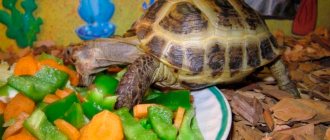Beagle - features of the breed
The Beagle is a tireless hunting breed, bred for the long rut of game. Due to its impressive age, the breed has acquired a number of hereditary diseases that can appear at different ages.
To properly raise a puppy, it is important to be aware of all the characteristics of the breed.
Your puppy will not gain weight properly if his diet does not contain enough calories. Moreover, when compiling a diet, it is important to take into account the pet’s need for vitamins and microelements.
How to feed a beagle: how many times a day and in what quantities?
An adult beagle eats almost the same thing as a puppy. But when choosing dry food, buy adult food instead of puppy food.
When feeding natural food, the amount of food is determined at the rate of 5% of the dog’s weight. That is, a 10-kilogram beagle needs 500 grams of food, which you divide into 2 meals.
You can add vitamin and mineral supplements to the diet, but consult your veterinarian first.
Beagle
- a hunting dog breed that is distinguished by activity and agility. Dogs of this breed must expend a lot of energy on exercise. They do not know how much to eat and are ready to beg for it constantly. Before you become the owner of a puppy of this breed, you need to learn how to feed it and what is included in the beagle’s diet. If you don't monitor your puppy's nutrition, he will begin to gain weight. This threatens obesity, disruption of the gastrointestinal tract and other health problems for the pet.
Choosing a place and utensils for feeding
To ensure the safety and comfort of your pet while eating, it is important to make the right choice of place and utensils. Beagles have long, drooping ears, so you need to pay special attention to the selection of bowl models. When feeding from standard bowls, the dog's ears are fixed at the back of the head or special hygiene caps are used.
From an early age, the beagle needs to be taught to eat with the bowl on a stand . The stand should be adjusted as the puppy grows. To prevent your pet from slipping and to ensure that the eating area always remains clean, it is better to cover it with a non-slip rubber mat.
How to feed
The owner needs to strictly regulate the feeding of the beagle. It must be carried out at the same time. It is necessary to follow the regime. Meals cannot be planned before the walk. During active games, gastric volvulus may occur. It is better to walk first, then feed. It is necessary to equip a place for eating, where there will be an adjustable stand for a bowl and 2 containers (for food and water). The stand is needed for the correct formation of the dog’s posture. With its help, the bowl of food will be at the level of the shoulder girdle.
The daily food intake and frequency of meals depends on the age of the dog:
- At the age of 1 month, the daily food intake for a beagle puppy is calculated based on its weight and is 6-8 percent of the pet’s weight. The daily allowance must be recalculated every month until the puppy grows up. The resulting daily value must be divided by 6 (the number of meals at this age), this is how the weight of one serving is calculated.
- From 2 to 3 months, the number of meals is reduced to 5 times.
- A four-month-old puppy should eat the daily amount in 4 meals.
- From 6 to 9 months, a small beagle should eat 3 times.
- From 10 months to one year, puppies need to adapt to two meals a day.
- An adult retains two meals a day, but the daily norm is already 5% of body weight. This is due to the fact that up to a year the beagle is actively growing and developing. A large amount of energy is spent on this. The exception is pregnant dogs. They need three meals a day.
- For older representatives of this breed, two meals a day with a daily allowance of 3% of body weight is sufficient. Animals are no longer so active and do not expend much energy.
What to feed a beagle puppy - choosing the type of diet
One of the most difficult decisions you will have to make as an owner is choosing the type of diet. When deciding what to feed your beagle puppy, it is important to decide on the type of diet, namely, make a choice between:
- Natural feeding.
- Industrial feeding.
- Mixed feeding.
Each diet type has advantages and disadvantages that may make or break your diet. However, when choosing a diet, it is necessary to put the needs of the pet at the forefront.
Natural diet
A natural diet is preferable because your beagle puppy will be able to digest foods from a very young age.
As part of a natural diet, you need to make a choice between:
- Feeding raw and cooked foods.
- Feeding meat porridge.
- Feeding exclusively raw foods is a raw food diet.
Benefits of a natural diet for a beagle puppy:
- Constant monitoring of the balance of the pet's menu.
- The ability to enrich the diet with vitamins or microelements, if necessary.
- Ability to control the freshness and quality of products.
- Relatively low cost against the backdrop of high quality food.
In fact, a natural diet has only one drawback - the time it takes to prepare food. If you do not have the opportunity to prepare fresh food for your pet, it is better to switch it to high-quality industrial food.
Ready-made feed
Ready-made food helps owners save time, but is much more expensive than natural food. If you decide to transfer your pet to industrial feeding, it is important to decide on the type of product, based on its quality.
Ready-made feeds are divided into types:
- Dry (granules).
- Semi-moist (pieces with gravy).
- Moist (pate or paste).
- Treats.
The choice of food quality is a key criterion when transferring a pet to a commercial diet. Based on quality, feed is divided into classes:
- Economy
- Premium
- Super premium.
- Holistic.
The advantages of ready-made feed include the availability of individual lines that make it possible to provide balanced and high-quality nutrition for animals with individual characteristics.
According to their intended purpose, ready-made feeds are divided into:
- Everyday.
- Supportive.
- Preventive.
- Medicinal.
- For exhausted animals.
- Hygienic (usually treats).
Advantages of ready-made feed:
- Save time.
- When feeding high-quality food, you do not need to worry about vitamin supplements.
- Ready-made food does not spoil so quickly.
Flaws:
- Expensive, industrial feeds are often counterfeited.
- Common brands of industrial feed are produced by certified partners, and these products are often inferior in quality to the original.
- There are practically no holistic food products available for free sale; they have to be ordered from official distributors.
Bitch milk replacer is a commercial ready-made food that can be given to Beagle puppies from the first day of life. Pates and canned food for puppies are introduced into the diet no earlier than 1 month.
Mixed diet
A mixed diet involves feeding natural and industrial products. There are no benefits for your pet in this type of diet. The disadvantages are an increased risk of excess weight gain, vitamin deficiency or hypervitaminosis, indigestion and dysbacteriosis.
Veterinarians do not recommend keeping dogs on a mixed diet, especially until the puppy is 4-5 months old.
Industrial products and natural food have different structures, so the puppy’s digestive tract physically cannot digest it when taken at the same time.
Diet for a fat beagle
It's no secret that beagles are prone to obesity. Obesity is caused by poor nutrition, irregular physical activity, health problems and treats from the owner's table.
To determine whether your dog is obese, you need to weigh him and compare his weight with the norm for his breed/age. Weighing is carried out in 2 ways:
- If your pet has a calm character, just put him on the scale.
- If you have a more active character, pick up your beagle. 2 weighings are done - with and without the dog. Subtract your mass and you are left with the mass of your animal.
Completeness can also be calculated visually. It is enough to evaluate whether the waist is visible, whether the stomach is tucked, whether the ribs are felt. If the dog does not look slim and fit, you need to contact a specialist.
The doctor examines the dog and prescribes tests for it. Based on the information received, they will help you create a diet plan.
The diet is based on the usual type of nutrition. For dry food, reduce the amount of carbohydrates. The choice falls on food based on natural meat and vegetables; the addition of grains is excluded. These foods include:
- Orijen.
- Acana.
- Pronature.
- Go Natural.
- Grandorf.
- Farmina.
- Arden Grange.
- Wolfsblut.
- Brit Care.
Porridge is removed from “natural” food. The emphasis is on lean meat, low-fat kefir, cottage cheese and vegetables. Among the vegetables, the most beneficial ones will be zucchini, cauliflower, pumpkin and carrots. They regulate bowel movements, contain essential fiber and promote weight loss.
The meat is strictly dietary: chicken, turkey, rabbit. By-products are completely excluded during the diet. You can give cottage cheese periodically. Fish can be given boiled, preferably haddock, pollock, flounder, roach, navaga, silver hake and other low-fat species of sea fish.
Monitor your pet's condition, activity and mood. If the dog has lost weight and feels well, you can switch to a maintenance diet. If your pet does not tolerate the diet well, you can increase the number of feedings up to 3 times.
In any situation, it is worth consulting with a veterinarian before changing anything in the diet.
Sample menu by age for a beagle puppy
When deciding on the type of feeding for a beagle puppy, you need to create an approximate menu by age and evaluate your capabilities. Many owners realize how expensive the industrial type of feeding is already when they switched their pet to ready-made food.
Important! Switching to natural food from ready-made food takes time and is detrimental to the functioning of the digestive system.
Menu for puppies up to a month
Until the age of one month, puppies are absolutely helpless and completely dependent on their mother. The natural menu for a beagle puppy under the age of one month is only mother's milk. If for some reason a beagle puppy is left without maternal care, it needs to be artificially fed. Industrial menu for a beagle puppy up to a month old - up to 2 weeks of age, a substitute for bitch's milk, from 2 weeks of age, baby formula or goat's milk diluted with boiled water.
The serving size depends on the size and physiological characteristics. To determine portion sizes more accurately, puppies should be weighed regularly. If underweight is detected, the puppies need to be fed additionally.
Number of feedings:
- From birth to 2 weeks, puppies eat every 2 hours without a break for sleep at night.
- From 2 to 4 weeks, puppies continue to eat every 2–3 hours, but take a nightly nap of 4–6 hours.
Note! If there are 2-3 puppies in a litter, they may eat less often because the mother's milk is larger and more concentrated.
At 1 month of age
At 1 month, Beagle puppies begin to open their eyes, their hearing and sense of smell become more acute. Babies begin to become interested in adult food, and complementary foods are introduced at this stage.
Natural menu:
- Mother's milk.
- Whole goat or cow's milk.
- Low-fat broth.
- Boiled minced meat mixed with broth.
If the puppy is artificially fed, at the age of 1 month it is not recommended to suddenly change the diet.
Industrial menu:
- Bitch milk substitute.
- In case of growth retardation - pate for emaciated puppies.
Serving size depends on growth rate. Typically, puppies will double the amount they eat per meal within a week. One-month-old beagle puppies receive most of their nutrients from their mother's milk.
The number of feedings depends on the amount of milk the mother has. Usually, in addition to mother's milk, puppies take supplementary food (in small quantities) 5-6 times a day.
At 2 months
At 2 months, Beagle puppies have almost all of their baby teeth, which allows them to chew food that is not too rough.
Natural menu:
- Mother's milk.
- Whole cow's or goat's milk.
- Calcined cottage cheese.
- Dairy products.
- Bouillon.
- Boiled minced meat.
- Ground, raw, boiled meat.
If the puppy is artificially fed or supplemented with ready-made food, it is better not to change the type of diet.
Industrial menu:
- Bitch milk substitute.
- Canned food for medium breed puppies.
Serving size depends on weight. Usually, at one meal, the baby eats up to 40–60 grams of food. The more puppies in the litter, the more actively they will eat complementary foods.
The number of feedings varies from 4 to 6 times a day, excluding mother's milk consumed.
Menu for a beagle puppy aged 3 months
At 3 months or a little later, the puppy moves to a new home, which is accompanied by severe stress. The new owner is advised to maintain the usual diet and feeding schedule for 10-14 days.
Natural menu:
- Mother's milk.
- Whole milk, fermented milk products, cottage cheese.
- Boiled minced meat, raw, chopped meat.
- Broth, vegetable soup with meat broth.
- Raw quail eggs. Chicken eggs: yolk only, boiled or in the form of an omelet.
- Rice, buckwheat.
Even if you have chosen an industrial type of diet, do not forget that the main part of the menu of a 3-month-old puppy should consist of milk.
Industrial menu:
- Bitch milk substitute.
- Canned food for medium breed puppies.
- Semi-moist food for medium breed puppies.
Portion sizes are constantly growing. Typically, in one meal, a pet eats from 100 to 200 grams of food. After moving to a new home, weigh the puppy in order to timely track any loss or sudden weight gain. At such a young age, obesity is fraught with improper formation of the heart muscle, and lack of weight leads to defects in the formation of the skeleton.
The number of feedings depends on the degree of activity and the size of the portion eaten at one time. Typically, the number of feedings ranges from 4–5 times.
At 4 – 6 months
Between 4 and 6 months, a beagle puppy’s baby teeth will begin to change, so its diet needs to be enriched with vitamins, proteins and microelements.
Natural menu:
- Whole milk, fermented milk products, cottage cheese - in large quantities.
- Boiled and raw meat without fat and bones - beef, veal, rabbit, turkey, quail.
- Beef by-products, boiled, chopped. You can use peeled, washed tripe in its raw form.
- Chicken and quail eggs – raw, boiled, omelet.
- Cereals – buckwheat, rice, barley, wheat and barley.
- Vegetables – boiled with porridge, raw with meat or cottage cheese.
If you decide to keep your pet on ready-made food, do not include dry granules in the diet until the baby teeth are completely replaced.
Industrial menu for a beagle puppy:
- Pates for medium breed puppies.
- Semi-moist food for medium breed puppies.
- Soaked dry food for medium breed dogs.
The serving size depends on the individual characteristics and taste preferences of the dog. The average portion of food per meal can range from 200 to 400 grams.
The number of feedings is reduced because the dog can consume more food at one time. Typically, puppies eat 3-4 times a day and have 2-3 snacks.
Puppy menu from 6 months to 1 year
At the age of 6 months to 1 year, the puppy’s menu expands as much as possible; during this same period, the puppy decides on taste preferences, which he will adhere to for the rest of his life.
Natural menu:
- Meat – beef, poultry, rabbit.
- Meat by-products – beef, poultry.
- Milk (unless lactose intolerant).
- Fermented milk products - any, preferably homemade.
- Fish – low-fat, oceanic, peeled, boiled.
- Fish and meat broths.
- Chicken and quail eggs.
- Cereals – buckwheat, rice, barley, wheat and barley.
- Vegetables except boiled potatoes and raw cabbage.
- Fruits, except juicy and very sweet.
- Greens, grass, bran.
After the replacement of baby teeth, dry food is introduced into the puppy’s diet.
Industrial menu:
- Until the complete change of teeth (7–8 months) – wet and semi-moist food for medium breed puppies, soaked dry food.
- After a complete change of teeth - 75% dry and 25% wet or semi-moist food for medium breed dogs.
Serving sizes increase until approximately 8 months of age. With high-quality feeding, the daily food intake for a beagle is from 400 to 600 grams.
At the age of 4 to 6 months, a Beagle puppy may noticeably reduce the portion of food consumed, which is the norm.
The number of feedings is gradually reduced from three to two times a day. It is recommended to feed adult dogs 2 times a day.
Feeding an adult dog
The nutrition of an adult beagle depends entirely on what he was fed until he was a year old. Do not allow the dog to switch from food that is familiar to him to another - the body may not be able to cope. To clean the gums, use special bones (sold at any pet store), calf tails and massive joints.
After a year, the diet is reduced to 2 times a day. The exception is pregnant and lactating dogs. They are fed 3 times a day, always fermented milk products every day, until lactation stops.
Monitor your dog's weight carefully. The risk of obesity increases with age. Food should make up about 4–5% of the animal’s body weight (excluding body fat). For aging dogs, food is reduced to 2.5–3%. If you have any diseases, the decision about food intake is made by the doctor.
Dry food
For an adult dog, premium and super-premium dry food is chosen. The packaging should be marked “For adult dogs.”
Breeders give preference to the following foods:
- Royal canin.
- 1st Choice.
- Advance.
- Acana.
- Pro Plan.
- Now Natural.
- Darling.
- Pedigree.
- Pro Pac.
Dry food has a number of advantages:
- On the back of the pack, manufacturers print already calculated tables indicating the daily amount of food for a certain weight of the dog. For an adult, it will be enough to divide the indicated figure into 2 servings.
- In dry food, all proteins, fats, carbohydrates, mineral supplements, and fiber in the required quantities have already been calculated.
- Saves you time - no need to cook, clean, or pick out bones.
- Dry food is not the most perishable product.
- Cheaper than natural ones.
- Convenient for transportation (when you travel with your pet to the country house or village in the summer).
When purchasing dry food, it is important to give preference to whole packaging. The food is in a sealed bag and is not oxidized by oxygen, which allows it to remain fresh.
The disadvantages of dry food include:
- Incorrectly selected food leads to allergies.
- Doubt regarding the composition indicated on the package.
- The possibility of producing feed at high temperatures, which leads to loss of vitamins.
- The possibility of adding emulsifiers and preservatives to food for long-term storage, which puts your dog's health at risk.
It is important to soak dry food, regardless of the age of the beagle.
Natural nutrition
Natural food provides maximum benefits for your pet’s body:
- You are always sure that the dog eats natural foods.
- Does not contain dyes, preservatives, emulsifiers, dyes or flavors.
- Your four-legged friend is always happy and happy.
- Variety of products, tastes.
- If you are allergic to a certain product, you can replace it with another.
Flaws:
- Price. Natural products are not affordable for everyone.
- Your time spent on cooking.
- The need to independently calculate the daily norm, take into account the percentage of meat and other products.
- There is a need for additional vitamin and mineral supplements.
Vitamins and supplements
Before the age of one, on an ongoing basis, after a year - in courses, the beagle puppy should receive vitamins and supplements. Carrying out vitamin courses is especially important if the pet is kept on a natural diet.
Natural vitamin supplements:
- Meat and bone meal.
- Clean, dried, crushed egg shells.
- Bran.
- Fish, chicken, beef liver.
- Greens, vegetables, fruits.
- Sunflower oil, olive oil.
Pharmacy vitamin supplements:
- Fish fat.
- Feed tricalcium phosphate.
- Omega-3, Omega-6.
- B vitamins.
- Undevit and analogues.
Many owners prefer to give beagle puppies special vitamin complexes designed taking into account the needs of the puppy at a certain age.
Homemade food
Once the beagle reaches the age of 1 year, feeding is done 2 times a day, preferably after a walk in the fresh air. When feeding your beagle natural food, it is important to follow the following recommendations:
The food must be warmed up and have a medium consistency. The most important requirement is the freshness of the products. An animal, just like a person, can get serious food poisoning due to poor quality food;
The basis of the home diet should be lean meat, including poultry and fish, offal, cereals, dairy products, and plant ingredients (herbs, vegetables, fruits). The share of plant components in the diet is no more than a third;
if meat and dairy products can be present on the menu every day, then offal can be offered to the animal no more than three times a week and exclusively in boiled form;
It is forbidden to give hollow bones, even as a treat - fragments can seriously injure the digestive tract and even lead to the death of the dog. Therefore, it is better to offer your pet large joints, cartilage, tails, snouts, etc. as a treat;
meat products are given to the animal in small pieces raw, but subject to pre-treatment: frozen and just thawed or after washing with hot boiling water. It is better to leave fat and veins on the meat, but it is important that there are not many of them;
The main source of carbohydrates for the beagle's body is cereals. Oatmeal, buckwheat, rice and wheat porridge are preferred. You can add vegetables and a little vegetable oil to the finished porridge in meat broth;
At the first feeding, the dog is offered plant products and fermented milk. Cottage cheese, sour cream, whey, carrots, apples, beets, zucchini, and fresh herbs are suitable for feeding;
Beagles are given fish only boiled once a week, after the meat has been cleaned of dangerous bones.
Food from the table is prohibited, as it not only violates discipline for the animal, but can harm its health. When feeding a beagle, it is strictly forbidden
to give sweets
(buns, candies, chocolate), smoked, highly salted, flour, spicy, since the dog’s body is simply not adapted for such food. But it is necessary to regularly give your pet vitamin and mineral supplements with a natural feeding style.
Water in a beagle puppy's diet
When preparing a diet for a beagle puppy, it is important to consider that water plays a key role in metabolic rate. When dehydrated, the blood thickens, which adversely affects the functioning of the heart and other organs.
With the natural type of feeding, the puppy receives quite a lot of moisture from food, so he is not in danger of rapidly developing dehydration. With an industrial type of feeding and the inability to drink water at will, dehydration in a beagle puppy can develop within a few hours.
What do newborn puppies look like?
Newborn beagle puppies have no vision or hearing, and thermoregulation is very weak. They are absolutely helpless and completely dependent on their mother - she takes care of them, feeds them and warms them.
Adult representatives of the breed can be two-colored or three-colored, but at birth their coat is colored differently. Future tricolor owners are born almost black and white, with hard-to-see red markings on the face, while two-color beagles are light at birth, without pronounced multi-colored markings.
At birth, beagles weigh 250-450 grams, by 1 month they already weigh 1.5-2 kg and grow to 18-20 cm.
What type of food to choose
Beagles are fed either natural products or commercial food. Mixing both diets is not recommended. The digestive system adapts to a certain type of food and begins to produce appropriate enzymes. Sudden changes lead to indigestion.
If the owner wants to switch his beagle from dry food to natural food, or vice versa, he needs to act gradually. The transition takes about 2 weeks - first replace 1/4 of the portion, after 3-4 days - 1/2, etc.
Important. It is advisable to choose the type of food before the beagle turns one year old. It will be more difficult for an adult body to adapt.
Ready-made dog food
Eating ready-made food - dry granules and canned food - is not as labor-intensive as preparing natural food. The owner is freed from the need to stand at the stove every day and buy food for the pet.
High-quality ready-made food has a balanced composition, therefore it fully covers the body’s needs for nutrients. With this type of diet, the beagle does not need vitamin and mineral supplements.
You can always keep a supply of dry food at home without fear that it will spoil. It is convenient to take with you on the road, which is a significant advantage for owners of show animals and travel lovers.
However, dogs can only be fed premium and super premium class or holistic products. Cheap food, which is sold in every store, is dangerous to health if consumed frequently.
The low price is due to the low quality of the ingredients. Economy class food does not contain natural meat (it is replaced with meat waste), but there are many artificial additives and ballast substances.
It is preferable to feed your beagle the following brands:
- Royal Canin;
- Monge;
- 1st Choice;
- Hills;
- Bosch;
- Advance;
- Orijen;
- Acana;
- Pro Plan;
- GO! NATURAL Holistic;
- Happy Dog.
Food for a beagle is selected taking into account its age and condition. There are separate lines for sale for puppies, pregnant and lactating females, elderly and sick dogs.
For your information. It is allowed to alternate canned food and dry food from the same manufacturer.
Natural products
Proponents of natural nutrition believe that it is more natural for dogs. With this approach, the owner is sure that the beagle is feeding high-quality and fresh foods that do not contain dyes, preservatives or other harmful additives.
The natural menu is more varied. The Beagle does not get tired of the taste of the same food, which reduces the likelihood of whims and food refusals. In addition, when feeding “natural” it is easy to exclude any product if the pet develops an allergy.
In addition to meat and offal, which account for at least 50% of the total food, beagles are fed rice and buckwheat porridge. They provide energy and contain fiber necessary for proper digestion.
It is advisable to add a tablespoon of vegetable oil to the porridge - this is a source of unsaturated fatty acids.
The daily menu must include fermented milk products - kefir, cottage cheese, fermented baked milk, yogurt, bifidok. Milk is given only to puppies, since adult animals no longer digest it.
Another important component of the diet is fresh herbs and vegetables.
Beagles can be fed:
- dill;
- parsley;
- lettuce leaves;
- pumpkin;
- carrots;
- zucchini;
- cauliflower.
Vegetables are mixed into porridges or given separately in the form of salads, which are seasoned with low-fat sour cream or vegetable oil.
Once a week, beagles are fed boiled sea fish - flounder, halibut, pink salmon and others. Fish contains vitamins, iodine and phosphorus. With regular use, the condition of the skin and joints of animals improves, and the coat becomes thicker and softer.
Twice a week an egg is mixed into food - chicken, quail, goose. This product is rich in folic acid, proteins, amino acids and minerals. It is better to boil eggs because they may be contaminated with dangerous bacteria.
As treats, beagles are given fruits (apples, pears, peaches, bananas), rye crackers, and pieces of low-fat cheese.
Basic Rules
Beagles should be fed regularly; the daily diet should be divided into several portions. Each serving should be the same size. Also, the animal should always have clean water with open access to it.
It is best if you eat at the same time. If, after a beagle has eaten enough food for its age, it continues to ask for more, you should know that this is pure begging. Accustom your pet to a routine - fifteen to twenty minutes after the start of eating, remove the food until the next feeding.
Overeating will lead to bad consequences such as excess weight or metabolic disorders. Remember that fat beagles lack many of the qualities inherent in the breed. For example, activity and endurance.
Therefore, do not give your dog more food than it should. Also, never feed your beagle from your table. Treating him just once will cause problems for a long time. Every time you sit down to eat, the beagle will give you a performance on the theme of a hungry dog.
Do not give your beagle sweets: chocolate, cookies, candy, etc. Salty, smoked, spicy, pickled - much of what you eat is not suitable for a dog. Such products can cause disturbances in the gastrointestinal tract.
The dog should have two separate bowls for food and water. It is best if they are made of stainless steel. They are durable, easy to wash, and the beagle cannot chew them. Plastic bowls will not last long, and bits from such dishes can get into the dog's stomach or get stuck in the throat.
When is a puppy separated from its mother?
The optimal age for weaning puppies from their mother is 1.5-2 months. At this age, they are already quite independent, but are not yet too attached to breeders and the environment, so adaptation to new conditions will be quick and easy.
In addition, at 45 days, a dog handler examines the puppies to determine breeding and evaluate the litter, so a puppy purchased at 1.5-2 months will have a puppy card confirming its compliance with the standard and the necessary vaccinations.











